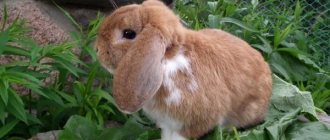Why is a hedgehog dangerous?
Despite their cute appearance, hedgehogs pose a threat to people. “Firstly, they can bite: hedgehogs have curved teeth, so the wounds they inflict have ragged edges and heal very poorly. Secondly, they carry various diseases, including dermatomycosis, salmonellosis, leptospirosis, and rabies.
Interesting materials:
What are the benefits of honeycomb wax? What are the benefits of lentils for men? How is buckwheat beneficial for women? What are the benefits of Microgreens? What are the benefits of mistletoe? What are the benefits of garden cranberries? What are the benefits of ascorbic acid? What are the benefits of barberry berries? What are the benefits of hawthorn fruit for a man? What are the benefits of rye bread?
Hedgehog in a city apartment? Yes! My experience of keeping a dwarf white-bellied hedgehog
For as long as I can remember, I have always loved hedgehogs. Cartoon and fairy-tale images depicted cute animals with the same apple or mushroom on their prickly back and a kind, kind face. Well, how can you not fall in love?
- Lyrical digression
- Myths about hedgehogs
- Care and maintenance
Lyrics: the story of my love for hedgehogs.
My love quickly transferred to real animals: in the summer, my family and friends, hearing panting in the bushes, ran there and brought me a prickly lump. Yes, I was glad to touch even the thorns, although very often the animals turned around and allowed me to stroke my belly, looking at me with curiosity.
Sometimes hedgehogs came to our garden or garden, and once even a pregnant female came. She lived in the garden for a couple of weeks and left - apparently it was time for the little hedgehogs to be born. How I regretted that I couldn’t see the tiny hedgehogs!
Time passed, and I began to think that I would like to be able to tickle the soft belly and touch the prickly back of the hedgehog at any moment. Simply put, I wanted such a pet for myself. But is it possible to take a forest animal home? Can a city apartment replace the bosom of nature? Of course not. So I sighed and continued to timidly dream.
I would have dreamed of it further, but somehow - by accident or not - I found out that for quite a long time there have been decorative breeds of hedgehogs that can live in captivity and, in fact, were bred for this purpose. My dream has come true! My husband couldn’t resist my pleading eyes (and constant breaths of “I want a hedgehog”) and... That’s how Busya appeared in our house.
Busya is a female African pygmy white-bellied hedgehog; she has large ears, white fur on her belly, light spines and small dimensions when compared with the familiar forest hedgehogs. To be honest, she almost completely changed my understanding of hedgehogs. Much turned out to be completely different from what was previously thought. And, perhaps, I should talk about some things and refute a couple of myths, so that if you suddenly also want to have such a pet, you can be fully armed.
So, MYTHS
Myth #1: “Hedgehogs should be given milk/hedgehogs love milk.”
No no and one more time no! This is a gross mistake, which, however, concerns not only hedgehogs. Any adult mammal does not need milk (especially the milk of another animal!), lactose is simply not digestible in adults. Yes, it may well be that you have already given the hedgehog milk, and he even drank it. But... some people even have cats eating chips. In general, please don’t give milk to hedgehogs!
Myth No. 2: “Hedgehogs eat apples and mushrooms (and what else was there in cartoons?) and carry them on their thorns.”
The rich imagination of Soviet writers and animators endowed hedgehogs with thriftiness and a love for fruits, vegetables and mushrooms. In fact, hedgehogs do not intentionally string anything onto their spines. And even more so - apples and mushrooms. If only because hedgehogs are predatory, and to be more precise, insectivorous animals. That is, for their food in nature, they primarily look for beetles and worms.
Myth #3: “Hedgehogs always hibernate.”
Even in the wild, it may happen that a hedgehog does not gain the required weight by winter and simply cannot hibernate. But decorative breeds simply do not need this - just as there is no need to “sleep through” winter and cold. Moreover, if suddenly your pet, a dwarf white-bellied hedgehog like mine, suddenly decided to “take a good nap,” this is a reason to contact a veterinarian.
Myth No. 4: “Hedgehogs are very friendly, cute and smiling.”
We owe this myth not only to cartoons and fairy tales, but also to the Internet - pictures and photographs with kind, kind faces spreading into smiles are everywhere. Why, even in the description of the breed you can often find references to the friendly nature of the prickly animals. So, either I have a “defective copy,” as we sometimes laugh, or friendliness is still an individual quality of individuals, just like in people. To my Busya, as they say, “don’t put your finger in your mouth.” In the most literal sense.
Myth #5: “Hedgehogs are slow.”
These are the pipes! Hedgehogs move very quickly. I turned away for a second or two, and the animal was already at the other end of the apartment.
Care and maintenance
To be honest, hedgehogs are quite unpretentious in their care; nothing complicated or supernatural is required from the owner. First of all, a hedgehog needs a cage. Big. In general, the more, the better, since the animal needs space. You cannot keep more than one pet in one cage. The bottom should be covered with sawdust or wood filler. Not resinous! Well, of course, you need to change the filler in a timely manner. I usually try to remove solid waste every day or two, and once a week or a week and a half I completely change the filler and wash the cage tray.
The same cage should have a wheel for games and maintaining physical activity. It must be yes. My Busya rejected the wheel, it just annoyed her, so now she doesn’t have it. There should also be a drinking bowl with fresh water, which goes without saying, and a bowl of food. You can put pebbles - for grinding down the claws, hay and some rag scraps. And there should also be a house. Ideally, of course, it’s wooden, but for us it’s a shoe box with a cut-out “entrance.”
In addition to playing with the wheel (again, if the pet accepts this wheel), the animal should walk - take a promenade around the apartment. Otherwise, you will have a hard time at night: the hedgehog will ask to leave the cage - scratching, gnawing it and making all sorts of noise. But, interestingly, when going for a walk, pretty soon the hedgehog will hide in a secluded corner and fall asleep there. Moreover, it can squeeze even into fairly narrow cracks! For example, my Buska can fit under the door! Sometimes she walks with us like this for several days, and she really doesn’t like it when she is returned to the cage, and she immediately expresses her dissatisfaction: she scratches, scratches, gnaws... Thus, she has already managed to break her tooth once.
To be honest, I would have kept her “free grazing” if not for one “but”: hedgehogs are not particularly clean. Where he shits, he walks there too. And it sits in the most secluded corners, try to clean everything out of there. Hedgehogs also need to have their claws trimmed. Although they should wear down naturally, this does not always happen. And, of course, your pet needs to be bathed periodically. Although, I think you won’t forget about it, because hedgehogs are, hmm... fragrant guys. Not in the best sense of the word. But not fatal - I even survived being pregnant 
Hedgehogs also have their own diseases; they easily catch parasites. You should not ignore trips to the veterinarian if your pet begins to behave in any unusual way. My Busya has already managed to get shingles, having picked it up from our street shoes, and the cat has escaped it. They do not tolerate cold well, so if the floor is cold, the cage must be additionally heated. And we have encountered another problem several times: as I already said, hedgehogs hide in the most secluded corners, ones that sometimes cannot be reached with a broom or vacuum cleaner for decades. And, as a result, there are accumulations of dust, hair and wool, into which the hedgehog burrows with pleasure. And... this hair can damage your paw, for example. Pull with thin hair, disrupting blood circulation. This is what it might look like. In general, you need to periodically examine your pet for the integrity of its limbs.
Separately about nutrition: I already wrote above that hedgehogs are insectivores and even predators. In the wild, they feed on insects and small animals. Therefore, the basis of their diet should be bugs/worms/cockroaches and other similar living creatures. But in city conditions this is not always feasible, so in this case you need to give meat (just not fatty meat!). Chicken, for example. We buy proven minced chicken, sometimes we make it ourselves, or we just give it chicken fillet. You can also give meat baby food or high-quality (!!!) cat food. From time to time you need to give fruits and vegetables, however, my Busya is not always happy about such a treat. Whenever we get the chance, we immediately buy her bugs or cockroaches (brrr!).
If we talk about behavior and character... then I risk crying. When we were just studying the nuances of keeping a hedgehog in the house, we read a lot about how the animals are very friendly, know the owner and trust him, allowing him to pet him and scratch his belly. My Busya also knows where “her people are”: she doesn’t curl up into a ball, she drops her needles if we pick her up... But she’s very harmful! He loves to bite, and bites very painfully - he can bite through a finger until it bleeds. He snorts and puffs, constantly demanding to be let out of the cage and not be touched again. In general, although she is domestic, she often behaves worse than wild ones. And this makes me very upset.
But I don't regret anything! Even so harmful and prickly in every sense, she is the embodiment of my dream. As a child, I couldn’t even imagine that someday there would be a hedgehog running around in my apartment. However, I must warn everyone: if you are planning to get yourself such a pet, think ten times. And then ten more.
Much more could be said, but I don’t want to turn this article into Talmud. So if you have any questions, ask! I will be happy to answer.
Four legs, the fifth is a tail
The weight of hedgehogs can reach one and a half kilograms, and their body length can be up to 40 centimeters. These cuties are born with spines, but in the first day of life they are soft and only then harden. In total, the hedgehog carries more than 6,000 needles, which are regularly changed throughout its life.
The prickly animal's mouth is full of small sharp teeth - 36 in total. There are sharp claws on its paws. Hedgehogs also have a tail, which is almost invisible.
But it’s worth looking at the photo of a pet hedgehog, freely positioned with its belly up on the hand of its happy owner: a small, almost invisible tail is located, as it should be, between its hind legs.
Domestic hedgehog: nuances of hygiene
A domestic hedgehog requires care on a par with cats and dogs. In particular, you should constantly wash his bowls . hot water for this You also need to treat the running wheel with water and clean the bedding. It is recommended to change the litter approximately once a week.
bathed , but only when they become dirty. Warm water is suitable for this but even this should not get into the ears or eyes. Therefore, you need to fill the container approximately to the level of the hedgehog’s tummy.
IMPORTANT: As a detergent, according to numerous reviews, foam is ideal for bathing puppies. For example, based on oats.
It is convenient to clean with a toothbrush . It will perfectly treat the areas between the needles. It is also convenient for cleaning paws.
After bathing, the hedgehog must dry himself with a towel. You should not use a hairdryer - the animal may get scared.
It is also recommended to trim your hedgehog's claws. Otherwise, they will wrap up and the animal will be injured, for example, during a wheel race. But you only need to remove the very ends. Nail scissors are best suited for this purpose
Domestic hedgehog loves to swim
Hedgehog health
Hedgehogs are carriers of many diseases dangerous to humans: leptospirosis, rabies, yellow fever. They have ticks and fleas. Like all mammals living near humans, hedgehogs must be vaccinated. To do this, you need to contact a veterinary clinic.
The largest percentage of pets die due to gastrointestinal diseases. Therefore, it is important to maintain hygiene and feeding regime for hedgehogs. It is recommended to periodically disinfect the cage. The owner should be wary if the hedgehog refuses to eat or shows suspicious activity at unusual times. If the animal's behavior does not return to normal within a few days, you should immediately contact a veterinarian.
Breed selection
All hedgehogs differ in appearance, size and color. Each breed has its own characteristics in maintenance and diet. That is why it is extremely important to understand what breed of hedgehog you would like to purchase.
African
This species includes: African hedgehog and white-bellied hedgehog. This is an unusual creature that needs certain temperature conditions - the higher the air temperature and the higher the humidity, the better.
Eurasian
The Eurasian genus includes: Eastern European, common and European hedgehogs - they are perfectly adapted to our environment.
Steppe
The genus of Steppe hedgehogs includes: Chinese and Daurian hedgehogs; for them, increased air temperature and average humidity are also very important.
Eared
These hedgehogs belong to the more unusual species - these are the Indian, bare-bellied, spiny and Ethiopian long-eared hedgehogs.
Maintenance at the dacha
In the warm season, you can take your pet to the dacha, providing him with cozy living conditions. To do this, you need to build him an enclosure, lay moss, grass or leaves there. And he will build his own hole. To keep him dry and warm in rainy weather, it is necessary to make a strong roof over part of the enclosure.
Nutrition
The hedgehog is considered an unpretentious animal, and the question of “what to feed a pet hedgehog” is solved quite simply.
The pet will happily eat lean meat, offal, live insects, fish, cereals, bread, any dairy products and vegetables. The only mandatory component of a healthy diet is raw meat.
Where should a domestic hedgehog live: setting up a house for a hedgehog
A pet hedgehog must have a house. Otherwise, it will easily climb into unwanted places or get tangled in wires. But an aquarium is not an option - solid glass does not create the kind of microclimate that hedgehogs need.
The best choice is a cage that is as spacious as possible . And tall - at least 41 cm in height. The material does not matter - metal and wood will do. The main thing is that the distance between the rods is not too large. Hedgehogs love to escape. But the bottom must be solid to avoid injury.
A domestic hedgehog should live in a cage with bars.
A hedgehog's house must have food bowls . You can choose plastic ones, but it is preferable to install heavier dishes . Water can also be served in a bowl, or you can install an automatic drinking bowl. However, in the latter case, you will need to accustom the animal to it.
A tray with low sides should also fit into the cage . You need to look where the animal wants to relieve itself - and just install a toilet there.
IMPORTANT: To be on the safe side, you can sprinkle the entire floor of the cage with filler. It is best to use aspen sawdust or cover the bottom with thick fabric.
You definitely need to put sawdust, straw, and leaves on top. Hedgehogs love to build miniature shelters. You can also put pebbles and twigs for this purpose.
You should definitely consider installing a running wheel. Hedgehogs love to eat, and therefore are prone to obesity. The wheel will serve as both entertainment and exercise equipment.
Your pet hedgehog will love the opportunity to run on a wheel
Live, hedgehog, live!
About 5 years of life are measured by nature for spiny mammals in the wild, 8-10 years - this is how long domestic hedgehogs live with good and proper care.
To give your pet several years of life, you need to thoroughly study the features of its maintenance, diet and know some of the nuances that are simply necessary for the life of a prickly cutie.
In particular, hibernation is vital for the domestic hedgehog - without it it will die. To give your baby a winter nap, it is necessary first for the hedgehog to gain “fat” and gain about 50% of its weight.
Note!
- How to choose a mattress and not make a mistake? Review of the best models, size table
- Cotton blanket: advantages and disadvantages, rules of choice and care
- Review of ideas for exterior home decoration
To create favorable conditions for winter sleep, place the cage with the hedgehog in a cool place and cover it with dry grass or moss. Hibernation will last about 2 months; if the place is cold enough, the thorn will sleep until spring.
How to determine the sex, reproduction of a hedgehog
It is better to determine the sex of the animal in older babies, older than 5 days, so as not to make a mistake. You need to look at the hedgehog's tummy. The genitals of females are located closer to the anus, the genital organ of a small male is located almost in the center of the abdomen, and as the animal grows it moves lower.
If in the summer there is a need to take the animal home from the forest, then you should remember that the female must have offspring nearby. Without a hedgehog, the babies will die from cold and hunger. The absence of a male will not affect the brood. If possible, the animal should be returned to the same place where the first encounter took place.
The first offspring from a domestic hedgehog should be obtained when its age is less than a year, but more than 5 months. It is better to select a middle-aged male. Mating is allowed no more than 2 times a year. The couple is put in one cage, doubling bowls and houses, to avoid fights. Even if the rapprochement of the animals is not noticed, it is not advisable to keep them together for more than a week.
The female is observed for a month, since it is not always possible to determine pregnancy visually. Gestation lasts 31-35 days. After giving birth, the mother cannot be disturbed; she may eat the hedgehogs in fear that the den has been discovered.
It is quite easy to distinguish a male hedgehog from a female.
Babies are born helpless, almost naked, sometimes covered with soft needles. The mother feeds them and warms them with her warmth. After two weeks, if the hedgehog is outside the house, you can carefully pick up one baby from the brood for the first time. The offspring will become independent in 5-7 months, then the hedgehogs can be separated from the mother.
Breeding and offspring
Breeding hedgehogs is a very responsible step. Proper care for a pregnant hedgehog and babies is necessary. Having become pregnant, the female begins to prepare a nest for future offspring. Pregnancy in a female lasts for 7 weeks. How many hedgehogs are born depends on how old the female is and how fertile she is (from 3 to 7). Babies are born blind and with closed ears. They are less than 7 cm in length and weigh approximately 12 - 14 g. Some time after the babies are born, they develop white soft needles. On the eleventh day of life, babies are able to curl up into a ball. After about 2 weeks, the weight of the hedgehogs already reaches 50g, the needles harden, and after 2 months the young animals can live independently.
How to choose a healthy pet hedgehog: recommendations, tips
A healthy pet hedgehog is largely the result of human observation:
- The first thing you should pay attention to is the harmony of the overall appearance. A healthy animal eats enthusiastically, so there should be no sagging skin. However, the hedgehog should not resemble a ball either.
- The eyes should be bright and round. A comparison with shiny black buttons is appropriate.
IMPORTANT: Discharge and crusts indicate health problems.
Your pet hedgehog should look at you with sparkling eyes without sour eyes.
- The nose is ideally also clean and dry. Discharge and crusts are a clear sign of illness.
- Specks, wounds, bumps - all this should be absent . Of course, the hedgehog is covered in spines. However, when the animal moves, they do not lie close to each other, so skin imperfections are always visible.
- Speaking of walking. There is such a disease as “wobbly hedgehog syndrome.” According to statistics, the African dwarf variety is especially susceptible to it. From the name everything is clear - the animal staggers, shudders, and limps. As a rule, it has a whole bunch of concomitant diseases.
- belly should be evenly covered with fur. Mats, like bald spots, are excluded in a healthy individual.
A healthy pet hedgehog should have a belly evenly covered with fur.
Hibernation
Hedgehogs hibernate every fall if they have accumulated enough fat reserves. Therefore, from mid-summer it is necessary to switch your pet to an enhanced diet, otherwise there is a risk that the hedgehog will not wake up. You can understand that an animal is preparing for hibernation by its behavior: it will become less active and will be in a state of torpor. You need to keep your hedgehog hibernating in a room where the temperature does not rise above five degrees. The owner must provide the hedgehog with comfortable conditions, otherwise the animal may weaken and die by the time it awakens.
Walk
If there is a spacious enclosure, the hedgehog will have enough space for leisurely walks and games. In the summer, the cage with the animal can be taken out to the balcony, but the animal should not be left under the scorching rays of the sun or in a hot and stuffy room.
It is not worth walking with an animal on the street: the hedgehog is not suitable for such a pastime, and the abundance of unfamiliar noises will negatively affect its psyche.
Important facts about hedgehogs
Anyone who decides to have a hedgehog needs to know several features of these animals:
- Hedgehogs breed in the spring, but getting offspring from them in captivity is very difficult.
- These animals are nocturnal and do not adapt to the owner’s regime.
- Even a few drops of tea tree oil can lead to the death of your pet.
- Hedgehogs are very active, especially at night. This problem is solved by a running wheel with a solid surface and a diameter of at least thirty centimeters.
Keeping hedgehogs at home is a complex and responsible process. Before purchasing an unusual pet, you need to find out if there is a veterinarian in the city who is ready to treat the animal in case of illness.











